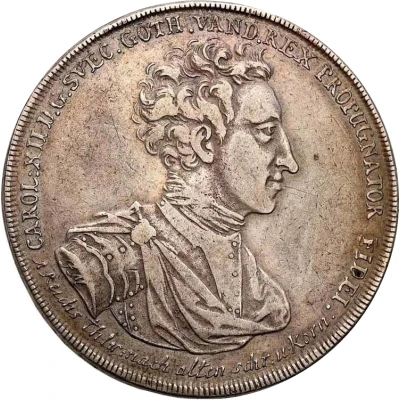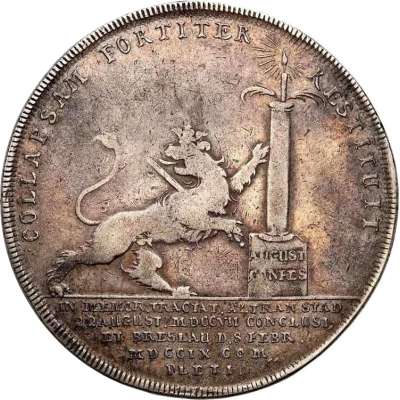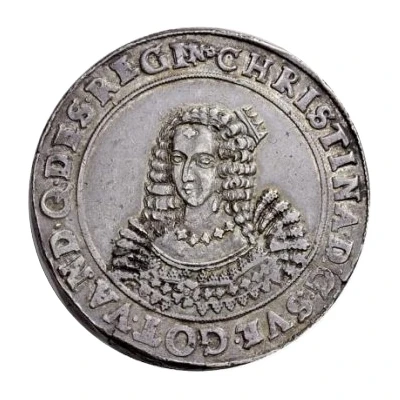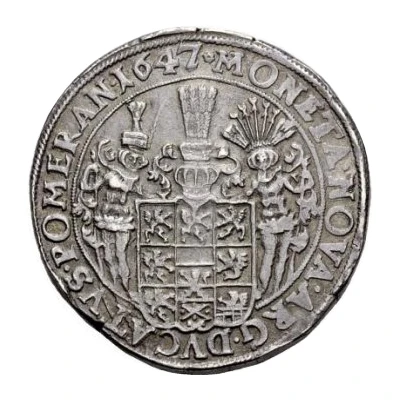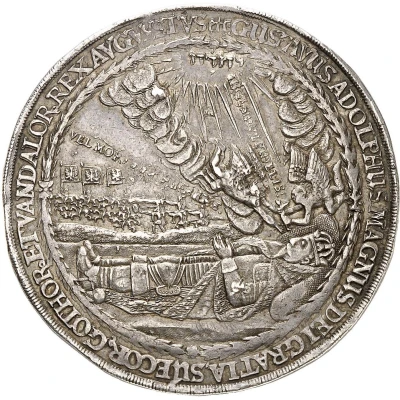
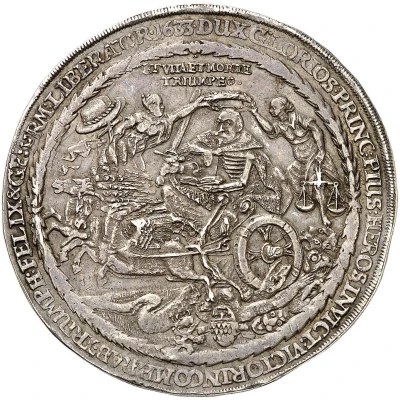

2 Thalers - Gustav Adolph II
1633 year| Silver | 56.8 g | 60.0 mm |
| Issuer | Swedish dominion of Pomerania (German States) |
|---|---|
| King | Gustavus II Adolphus (Gustav II Adolf) (1621-1632) |
| Type | Circulating commemorative coin |
| Year | 1633 |
| Value | 2 Thalers |
| Currency | Thaler (1630-1815) |
| Composition | Silver |
| Weight | 56.8 g |
| Diameter | 60.0 mm |
| Shape | Round |
| Demonetized | Yes |
| Updated | 2024-10-05 |
| Numista | N#320224 |
|---|---|
| Rarity index | 100% |
Reverse
King Gustavus Adolphus, facing left, wearing armor and holding Bible in left hand and sword in right hand, riding in chariot drawn by three winged horses over Hydra of Discord and pope wearing papal tiara and two-barred cross below. Personifications of religion holding cross and hat and justice holding scales above, placing laurel wreath on king's head. Wreath around.
Script: Latin
Lettering:
DVX GLORIOS : PRINC : PIVS : HEROS , INVICT : VICTOR INCOMPARAB : TRIVMPH : FELIX & GERM : LIBERATOR 1633
ET VITA ET MORTE
TRIUMPHO
Unabridged legend: Dux gloriosus, princeps pius, heros invictus, victor incomparabilis, triumphator felix et Germaniae liberator, anno 1634.
Translation: Glorious commander, pious prince, unconquered hero, incomparable victor, happy triumphator, and liberator of Germany, year 1634. In life as in death I triumph.
Comment
Mint master: Hinrich MartensKing Gustavus Adolphus the Great died on the battlefield of Lützen, on 6 November 1632. His body was first taken to Weißenfels and in the spring of 1633 to Wolgast on the island of Usedom. In July 1633, the Swedish admiral Gyllenhjelm transferred the body to Sweden and landed in Nyköping on 8 August 1633. The body remained there until the completion of the funerary monument in the Riddarholmen Church in Stockholm. The solemn funeral took place on 22 June 1634.
These commemorative pieces were presented to dignitaries along the route of the funeral procession.
Interesting fact
One interesting fact about this coin is that it was minted during a time of great change and upheaval in Europe, particularly in the German States. The Thirty Years War had just ended in 1648, and the Swedish dominion of Pomerania was a significant power in the region. The coin's design, featuring Gustav Adolph II, reflects the influence of Swedish culture and rule in the area. Despite the turmoil of the time, the coin's silver content and intricate design demonstrate the advanced craftsmanship and economic stability of the region.
